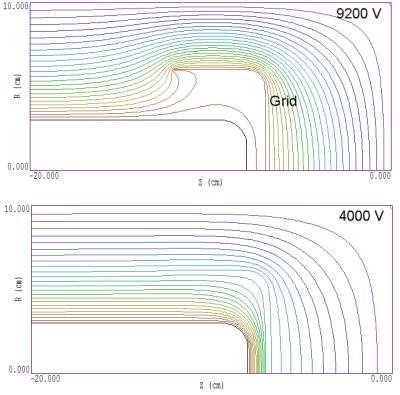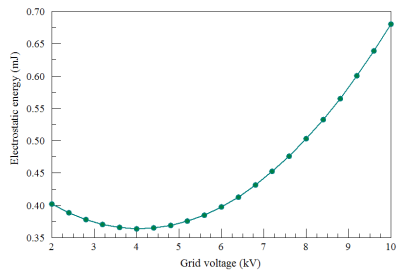In EStat and HiPhi, the term floating electrode refers to a fixed-potential region where φ is determined by capacitive or resistive division. In other words, the potential depends on the electrostatic solution and is not known in advance. For regions with non-zero volume, the standard method is to assign a high value of conductivity or relative dielectric constant (εr ≫ 1.0).
I recently had an inquiry about how to find the self-consistent potential of a floating open region. Such a region consists solely of node assignments and has zero volume. In this case, it is not possible to assign special material properties. One resolution is to perform a series of calculations with different potentials assigned to the region and to look for the one with the lowest electric-field energy. This involves some extra work. In the note Automatic solution control with Perl, I show how to automate the procedure using a Perl script.

Figure 1. Test problem showing the effect of grid voltage.
Figure 1 shows the geometry and equipotential lines of a test solution in cylindrical coordinates. The inner electrode has potential φ = 10,000 V and the outer boundary is grounded. There is a grid at unknown potential in the intervening space. The goal is to find the grid potential determined by capacitive division for a rapidly-pulsed voltage. I made a series of 20 calculations with grid potentials from 2000 to 10,000 V. The top section of Fig. 1 shows the distorted field distribution at 9200 V. I calculated the electrostatic field energy for each case. Figure 2 plots energy versus grid voltage. There is a minimum at 4000 V. Figure 1 shows the resulting smooth field distribution for the grid at 4000 V.

Figure 2. Electrostatic field energy versus grid voltage
Footnotes
[1] Contact us : techinfo@fieldp.com.
[2] Field Precision home page: www.fieldp.com.